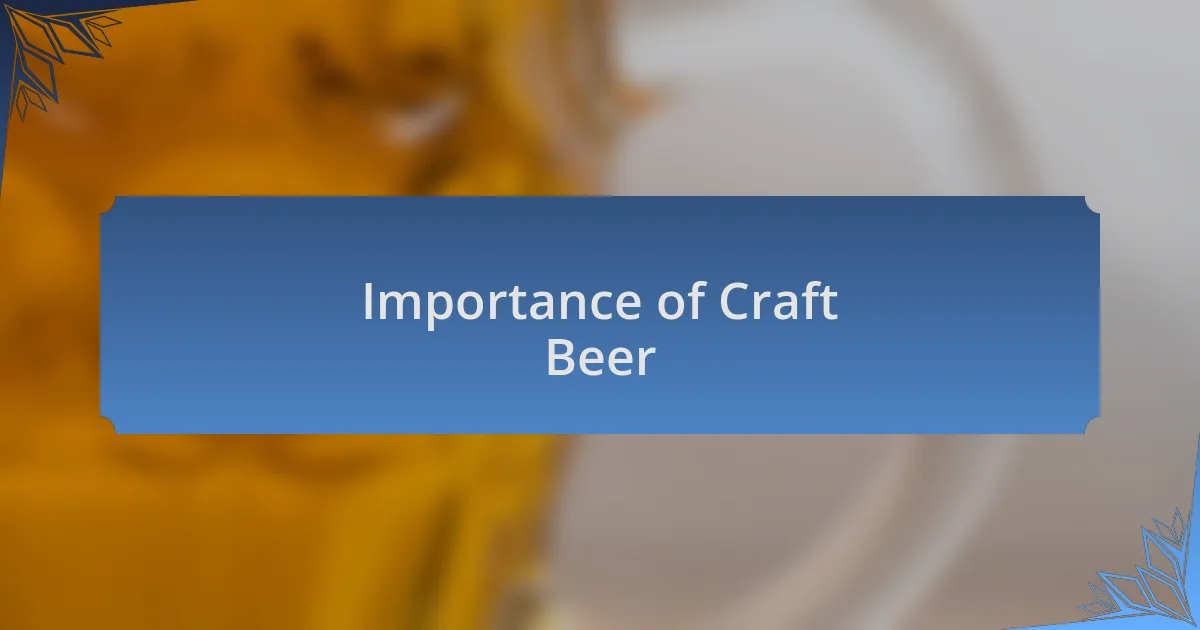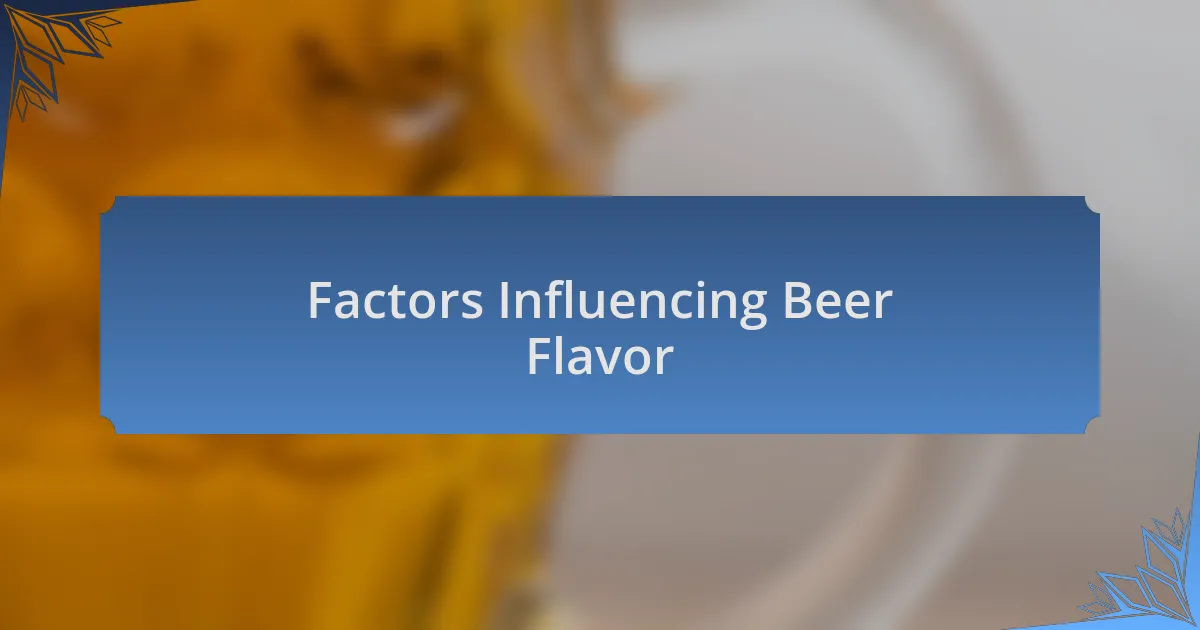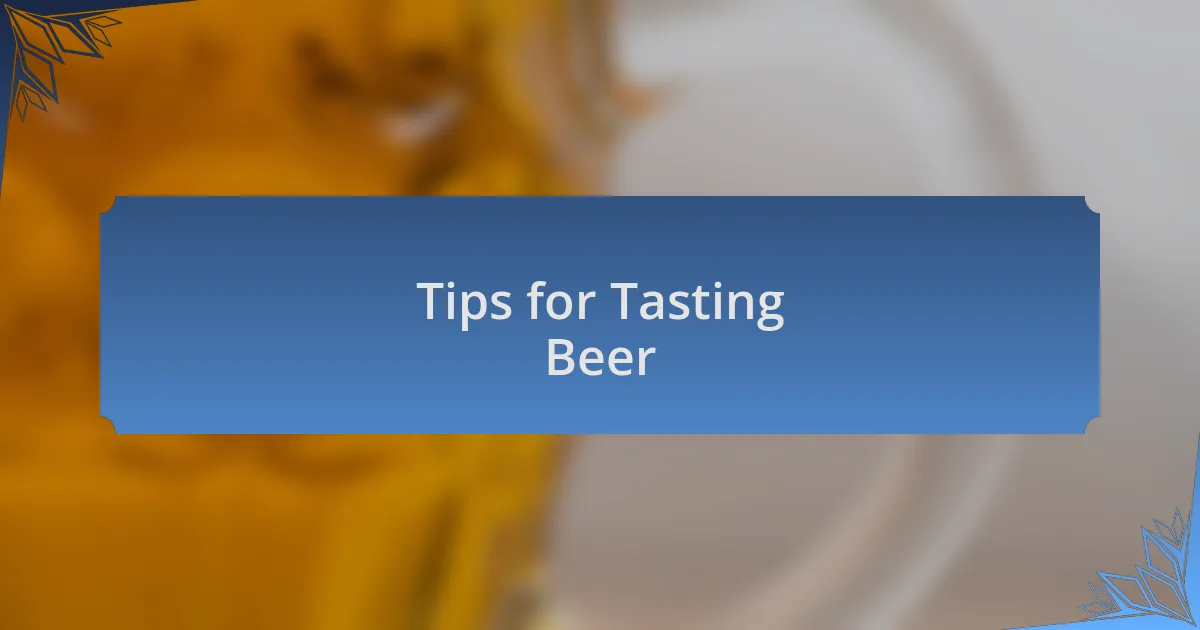Key takeaways:
- Craft beer festivals offer a diverse range of flavors and foster community connections through shared experiences with brewers and fellow enthusiasts.
- The choice of ingredients and brewing processes significantly influence beer flavor, highlighting the importance of craftsmanship and environmental factors.
- Engaging all senses during beer tasting—including visual, aromatic, and temperature considerations—enhances appreciation and understanding of different styles.
- Maintaining an open mind and reflecting on tasting experiences through journaling deepens personal insights and shapes beer preferences over time.

Understanding Craft Beer Festivals
Attending a craft beer festival is like opening a treasure chest of flavors. I still remember my first festival—it was overwhelming! So many booths, each with a unique selection of beers from local artisans. I couldn’t help but wonder: how do you choose where to start?
Craft beer festivals celebrate the artistry of brewing, showcasing not just the beers but the passion behind them. I’ve always found it fascinating to chat with brewers about their inspirations and techniques. Have you ever asked a brewer what makes their IPA different? The stories they share add a whole new layer to the experience and deepen my appreciation for each sip.
The atmosphere at these festivals is electric. People gather around, sharing laughter and clinking glasses while sampling brews that push the boundaries of flavor. It’s a perfect blend of community and creativity. Was there ever a time when you discovered a new favorite beer at a festival? Those serendipitous finds are what keep me coming back for more.

Importance of Craft Beer
Craft beer plays a crucial role in supporting local economies and fostering a sense of community. When I visit a local brewery, I often see familiar faces, and that sense of belonging is invigorating. Have you ever felt more connected to a place simply because of the people who gather there? I believe that craft breweries bring neighborhoods together, making them more vibrant and united.
Moreover, the importance of craft beer lies in its diversity. Each style tells a story, reflecting the culture and ingredients of its origin. I still remember tasting a sour beer for the first time at a festival—it was like sipping on a bold adventure. The unique flavors and brewing techniques remind us that there’s so much more to beer than just the familiar lagers and ales we often reach for. Isn’t it exciting to explore a world where creativity knows no bounds?
Lastly, craft beer encourages consumers to be more discerning and knowledgeable. I often find myself deeply engaged in conversations about flavor profiles and brewing methods with fellow enthusiasts. This shared curiosity not only enhances my palate but also inspires me to try new styles. Have you ever walked away from a discussion knowing you wanted to broaden your horizons? The craft beer community cultivates this desire for exploration, unearthing new favorites along the way.

Factors Influencing Beer Flavor
When it comes to understanding beer flavor, the choice of ingredients is fundamental. From the type of malt used to the hops’ variety, these elements significantly shape the final taste. I once had a beer brewed with smoked malt, and the experience was profound. The smokiness added a layer of complexity I hadn’t anticipated. Isn’t it interesting how a single ingredient can completely shift your perception?
The brewing process also plays a critical role in flavor development. Factors such as fermentation temperature and duration can influence the beer’s overall character. I vividly recall discussing a batch that had fermented at a lower temperature, producing fruity esters that danced on my palate. It made me wonder—how often do we overlook the magic happening behind the scenes?
Finally, environmental aspects, like water chemistry, contribute beautifully to the beer’s profile. Water’s mineral content can enhance or mute flavors, leading to significant variations even among similar styles. I remember tasting two IPAs from different regions, and their distinct mouthfeel made it clear just how much place matters. Have you ever stopped to consider how the brewing environment might shape your favorite beer? It’s a fascinating angle to explore in our quest to enhance our beer palate.

Tips for Tasting Beer
When tasting beer, it’s essential to engage your senses fully. I remember my first time swirling a glass of rich stout—it was like diving into the depths of chocolate and coffee aromas. Taking a moment to appreciate how colors and scents interact gives you a deeper appreciation for what you’re about to sip. Have you ever taken a deep breath before trying a new flavor? It’s an experience that heightens your enjoyment.
Next, consider the temperature of your beer. I once participated in a tasting where some beers were served too cold, and it stifled their nuanced flavors. The IPA that stood out to me was warmer, revealing layers of citrus and pine that I had initially missed. So, if you want to enhance your tasting, try letting your beer warm up just a bit. Isn’t it surprising how temperature can change your perception?
Finally, don’t rush—savor each sip. I vividly recall a moment when I took a slow, thoughtful sip of a Belgian ale. Every aspect unfolded, from the clove notes dancing on my tongue to the slight sweetness lingering at the end. This slower approach not only enhances enjoyment but also deepens your understanding of different styles. Have you ever paused to really let a flavor wash over you? That intentionality can transform a simple tasting into a memorable experience.

Lessons Learned from My Journey
Throughout this journey, I learned that keeping an open mind is crucial. I remember sitting in a rustic brewery, surrounded by friends, when I reluctantly tried a sour beer. Surprisingly, it captivated me with its unique tartness, showing me that each style has something to offer. Have you ever hesitated to try something new, only to find it ignites a passion you didn’t expect?
Another significant lesson was the importance of community in my beer exploration. At my first craft beer festival, I engaged with fellow enthusiasts who eagerly shared their favorites and personal stories behind each brew. Their passion was infectious, and it really drove home the idea that tasting isn’t merely about the beer itself; it’s about the connections we forge with others. Don’t you think that sharing experiences can enhance our understanding of even the simplest things?
Lastly, I discovered the value of reflection after each tasting session. I started keeping notes in a beer journal, capturing the feelings and flavors I experienced. Revisiting those reflections helped me recognize patterns in what I enjoy and slowly shaped my preferences over time. How has journaling or reflecting on your experiences changed your understanding of things? For me, it turned tasting into a more insightful and memorable practice.